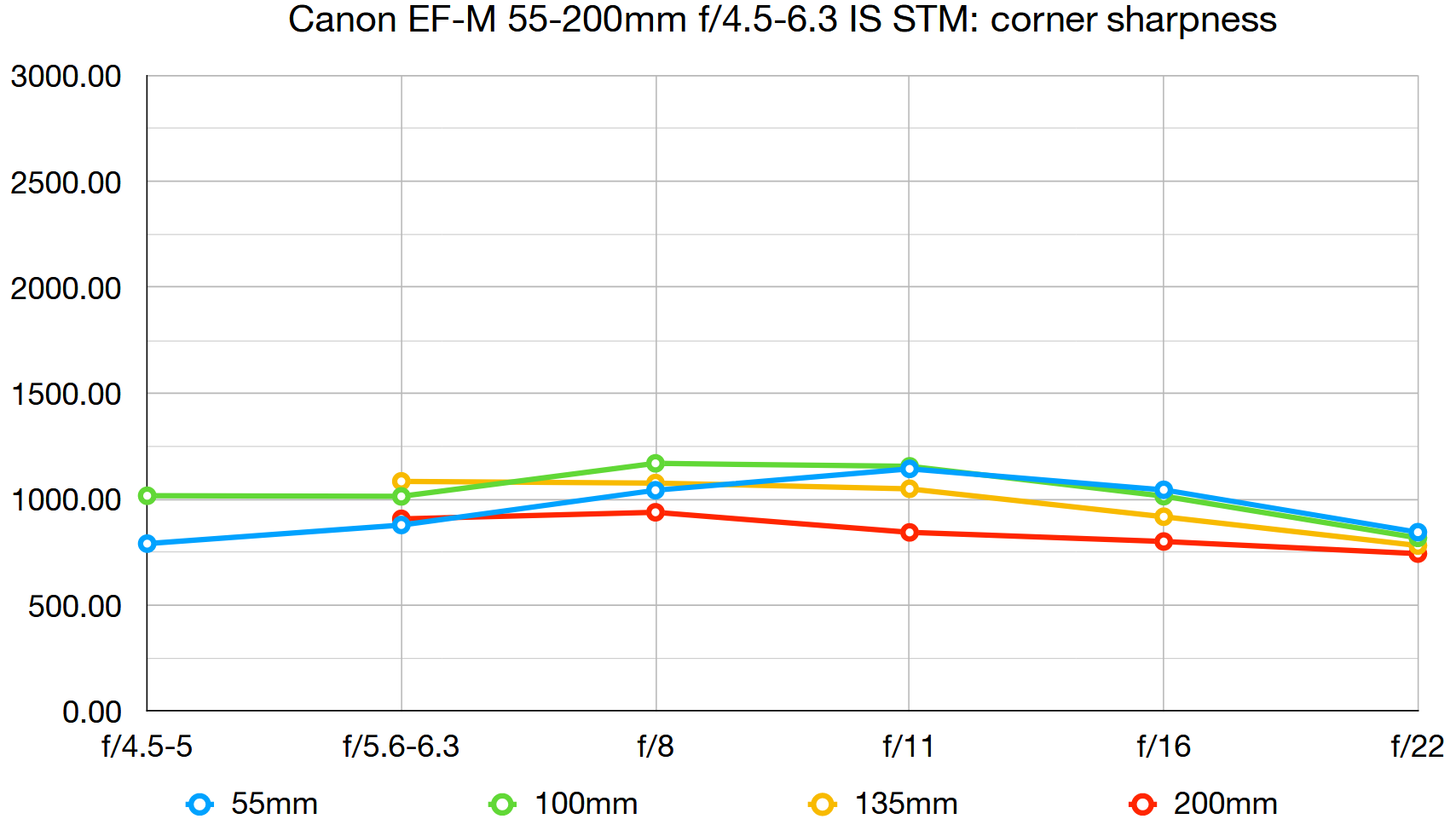Digital Camera World Verdict
There’s little point investing in one of Canon’s dinky little EOS M system cameras if you need to hang a big hefty lens off the front. Thankfully this one is amazingly compact and lightweight, yet delivers an impressive 88-320mm ‘effective’ zoom range in full-frame terms. It’s simple to use and boasts speedy stepping motor autofocus plus image stabilization, although downsizing comes at the cost of a modest aperture rating and sharpness could be better.
Pros
- +
Fast stepping motor autofocus
- +
3.5-stop image stabilization
- +
Super-lightweight for a tele zoom
Cons
- -
No easy-access mode switches
- -
Lacks weather-seals
- -
Hood sold separately
Why you can trust Digital Camera World
Although the Canon EF-M 55-200mm f/4.5-6.3 IS STM lacks the retractable design of Canon’s EF-M 11-22mm and 15-45mm wide-angle and standard M-mount zooms, this telephoto of the trio is nevertheless amazingly compact and lightweight, at just 61x87mm and 260g. The upshot is that you can fit a slinky EOS M system body and all three zooms into a really small camera bag, head out into the big wide world with a wonderfully lightweight combo, and be prepared for just about any shooting scenario.
Specifications
Mount: Canon EF-M
Full-frame: No
Autofocus: Yes
Stabilization: Yes
Lens construction: 17 elements in 11 groups
Angle of view: 27.8-7.8 degrees
Diaphragm blades: 7
Minimum aperture: f/22-32
Minimum focusing distance: 1.0m
Maximum magnification ratio: 0.21x
Filter size: 52mm
Dimensions: 61x87mm
Weight: 260g
Key features
Typical of EF-M lenses, the design is very clean-cut. There are no physical switches on the barrel, choices for auto/manual focusing and stabilization on/off being catered to by in-camera menus. Under the bonnet, these systems are taken care of by a fast yet virtually silent stepping motor for autofocus, and an optical stabilizer unit with a 3.5-stop rating, complete with auto panning detection. During panning, stabilization is only applied in the vertical or horizontal plane, depending on camera orientation and the direction of movement.
The zoom ring works with impeccable smoothness and, while the inner barrel extends at longer zoom settings, it doesn’t rotate during focusing. The manual focus ring is positioned at the front of the lens and, typical of stepping motor focusing systems, its electronic coupling enables smooth, precise adjustments.
As with Canon’s chunkier EF-S 55-250mm telephoto zoom for DSLRs, this lens for mirrorless M system cameras has a plastic rather than metal mounting plate. That’s no bad thing really, as it helps to keep the weight off and is still reasonably robust.
Performance
For a lens that ‘only’ stretches to a focal length of 200mm, the f/4.5-6.3 aperture rating might seem rather slow but, as with many lenses designed for mirrorless cameras, that’s a key factor in the diminutive build. Handling and balance are excellent on an EOS M body, autofocus is quick and accurate, stabilization is effective and image quality is convincing overall. Sharpness could be better but color fringing and distortions are fairly minor.
Lab results
We run a range of lab tests under controlled conditions, using the Imatest Master testing suite. Photos of test charts are taken across the range of apertures and zooms (where available), then analyzed for sharpness, distortion and chromatic aberrations.
We use Imatest SFR (spatial frequency response) charts and analysis software to plot lens resolution at the center of the image frame, corners and mid-point distances, across the range of aperture settings and, with zoom lenses, at four different focal lengths. The tests also measure distortion and color fringing (chromatic aberration).
Sharpness:
Levels of center-sharpness are a bit of a roller-coater, being good at 55mm and 135mm, less so at 100mm and 200mm. Away from the center of the frame, sharpness is a little mediocre throughout the zoom range.
Fringing:
There’s only minor color fringing at most zoom settings, although it gets a little more noticeable at the long end of the range. Image quality benefits from the automatic in-camera correction for lateral chromatic aberration, featured in all current and recent EOS M system bodies.
Distortion:
The best camera deals, reviews, product advice, and unmissable photography news, direct to your inbox!
There’s a little barrel distortion at 55mm, quickly switching to a low order of pincushion at focal lengths of 100mm and beyond. When uncorrected in-camera, distortions are much lower than in many more recent lenses designed for mirrorless cameras.
Verdict
There’s little point investing in one of Canon’s dinky little EOS M system cameras if you need to hang a big hefty lens off the front. Thankfully this one is amazingly compact and lightweight, yet delivers an impressive 88-320mm ‘effective’ zoom range in full-frame terms. It’s simple to use and boasts speedy stepping motor autofocus plus image stabilization, although downsizing comes at the cost of a modest aperture rating and sharpness could be better.
Read more:
• Best camera lenses to get
• Best Canon lenses
• Best Nikon lenses
• Best Sony lenses
Matthew Richards is a photographer and journalist who has spent years using and reviewing all manner of photo gear. He is Digital Camera World's principal lens reviewer – and has tested more primes and zooms than most people have had hot dinners!
His expertise with equipment doesn’t end there, though. He is also an encyclopedia when it comes to all manner of cameras, camera holsters and bags, flashguns, tripods and heads, printers, papers and inks, and just about anything imaging-related.
In an earlier life he was a broadcast engineer at the BBC, as well as a former editor of PC Guide.






